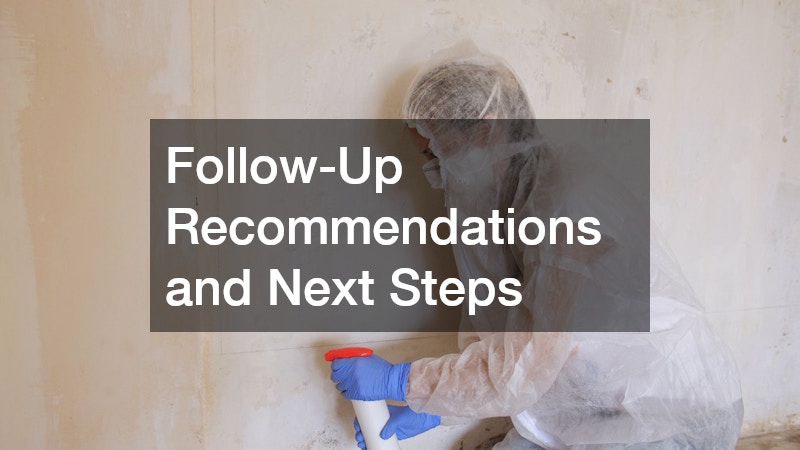Scheduling a professional pest inspection is an important step in protecting your home and family from unwanted intruders. Many homeowners hesitate before making the call because they are unsure of what the process involves. Understanding how the first visit works can help ease concerns and prepare you for what’s ahead. From the moment the technician arrives to the time they leave, each step is designed to ensure your property is thoroughly evaluated and treated.
Initial Consultation and Inspection
The first stage of the process typically begins with a consultation. When the technician arrives, they will introduce themselves, explain the plan for the appointment, and answer any immediate questions you may have.
The inspection is the most crucial part of the visit. The technician will walk through both the inside and outside of your property to identify signs of pests. This may include droppings, nests, chewed materials, or unusual odors. In addition, they will look for structural vulnerabilities, such as cracks in walls, gaps around windows, or leaks that could attract insects or rodents.
During this stage, you may be asked questions about your recent experiences. Have you noticed unusual activity at night? Have there been strange noises in the walls or attic? Are there areas of your home where you’ve spotted insects more frequently? Sharing this information helps the technician create a clearer picture of your situation.
Assessment and Customized Plan
Once the inspection is complete, the next step is assessment. The technician will explain what they found and provide an overview of the pest issues affecting your property. This explanation will cover not just the type of pests present but also the extent of the infestation and the areas most at risk.
Based on this assessment, a customized plan will be created. Unlike store-bought sprays or traps that provide temporary relief, a professional approach is designed for long-term effectiveness. The plan will outline treatment strategies, whether that includes bait stations, targeted sprays, or sealing entry points.
Another important part of this stage is discussing safety. The technician will reassure you that all products used are approved for residential environments and safe when applied correctly. If you have children, pets, or sensitive family members, you’ll be advised on any precautions you should take.
Treatment and Application
After agreeing to the plan, the technician will begin treatment. The methods used will depend on the pests identified. For example, a rodent problem may require traps and sealing access points, while a termite issue could involve specialized applications along the foundation of the house.
The treatment process is usually efficient and minimally disruptive. For interior treatments, technicians may target baseboards, attics, or crawl spaces. For exterior treatments, they may spray along the perimeter, apply granules to the yard, or treat vulnerable entry points.
You might notice the technician working carefully and methodically. Each application is designed to address both active pests and the conditions that may encourage their return. The goal is not just to eliminate what’s currently visible but also to break the life cycle and reduce the chances of future infestations.
During this time, you may be asked to step away from certain areas until the treatment has dried or settled. The technician will inform you of any temporary restrictions, such as keeping pets indoors or avoiding recently treated spaces.
Follow-Up Recommendations and Next Steps
The first visit does not end with treatment alone. A comprehensive pest management program includes follow-up recommendations to ensure lasting results. At this stage, the technician will review what was done and provide practical advice on how to maintain a pest-free environment.
These recommendations often include simple lifestyle adjustments, such as keeping food stored in airtight containers, repairing leaky faucets, and sealing small cracks or openings around the home. They may also suggest ongoing professional visits, especially if the pests identified are persistent or if your property is in a high-risk area.
Some companies offer service plans that include quarterly or biannual inspections. These programs are beneficial because they provide continuous monitoring, helping to prevent small issues from becoming major infestations.
Documentation is another important part of the process. You will typically receive a report detailing what was found, what treatments were applied, and what follow-up actions are recommended. Having this written record is valuable for tracking progress and ensuring accountability.
Your first visit with a Pest Control Service is designed to provide peace of mind and practical solutions. From the thorough inspection to the tailored treatment and ongoing recommendations, every step is focused on protecting your home and health. Knowing what to expect helps remove the uncertainty and allows you to feel confident in the process.
While do-it-yourself solutions may offer short-term relief, professional expertise provides long-lasting results. A trusted Pest Control Service not only addresses the current problem but also creates a barrier against future invasions.
When you schedule your first appointment with a Pest Control Service, you are taking a proactive step toward safeguarding your property. The visit is more than a routine service; it’s the foundation of a healthier, pest-free living environment.







